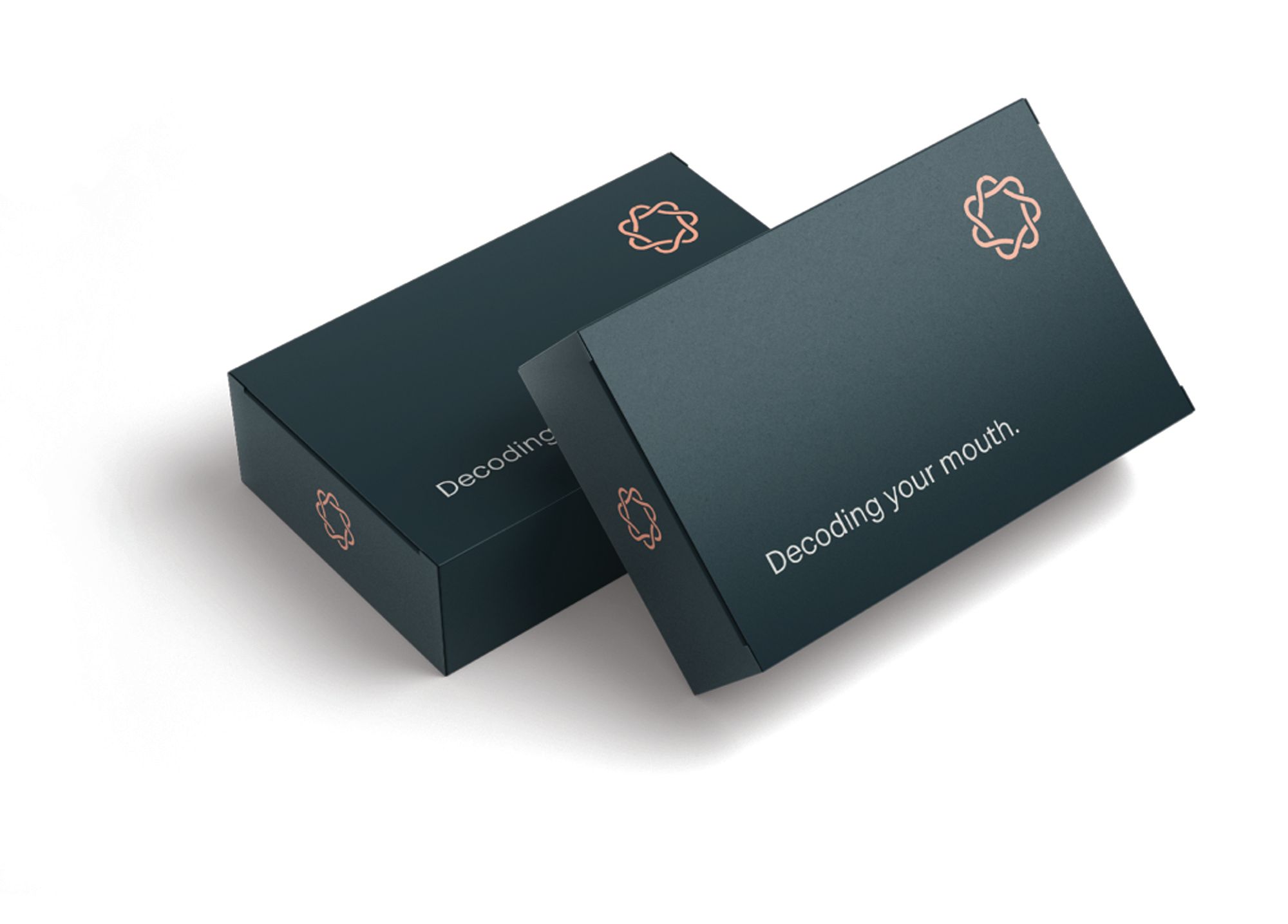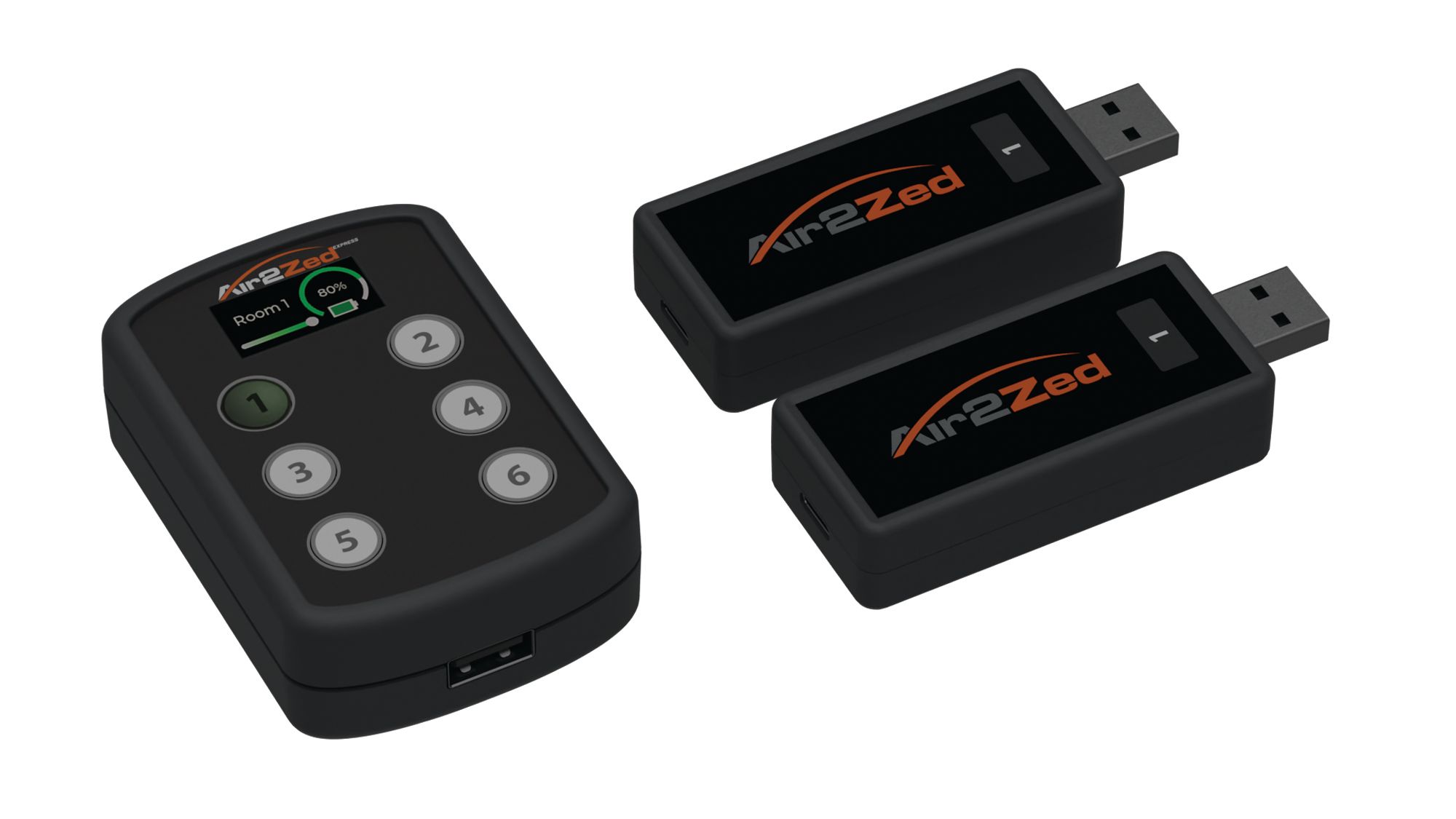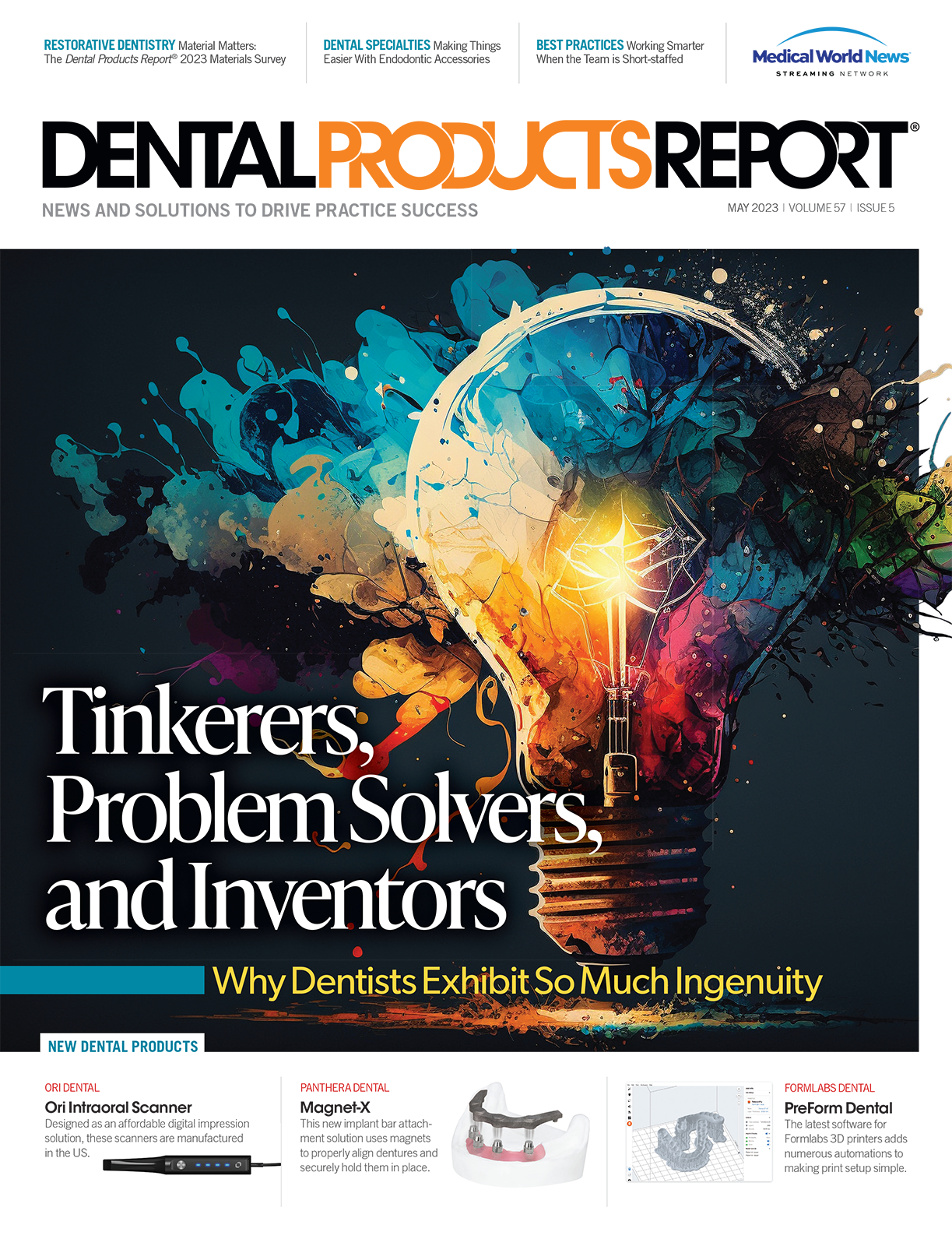Tinkerers, Problem Solvers, and Inventors: Why Dentists Exhibit So Much Ingenuity
Dentists have a unique, possibly inherent ability for innovations. We take a look at some of dentistry’s most important solutions to problems we might not even have been aware of.
Tinkerers, Problem Solvers, and Inventors: Why Dentists Exhibit So Much Ingenuity. Image: © dragomirescu - stock.adobe.com

As time passes and patients’ needs evolve, the need for innovation in the dentistry field increases. To meet these needs, new materials and technology come onto the scene, often being invented by the dental professionals who use them every day. That raises the question: why are dentists so innovative? Is there a trait that makes dentists and dental professionals intrinsically equipped to create new inventions?
To answer these questions, it may be pertinent to consider what exactly innovation means, and how far the dental profession has come in 2023.
The Origins of Innovation
Even ancient peoples with limited technology had to find ways to maintain oral health. Humans have long been aware of just how vital teeth are to normal, everyday functions, but the first recorded “dentist” did not come onto the scene until an ancient Egyptian man named Hesy-Re.1 Hesy-Re was a confidant of kings, a chief, and–according to certain translations–the first occupational dentist in Ancient Egypt. This is the first recorded instance of a dental practitioner, all the way back in 2600 BC.
Various mentions of teeth and dental practice occur throughout ancient history following Hesy-Re’s potential first practice of the profession. Around 200 AD, Etruscans began their practice of using crowns and bridges.2 Even with less technology, these ancient civilizations were innovative in many ways, including in dentistry, to help those who could afford or were deemed important enough to have sturdy teeth.
It would still be a long time until real restorative work was made accessible to the masses, but the beginnings of innovation in dentistry were established in these ancient cultures. In the early 1200s, dentistry and barbery went together, which may sound shocking in a modern context but was very normal at the time. In Europe, barbers were equipped with the necessary tools for cutting and extraction, uniquely positioning them to also perform rudimentary dentistry on their customers. Divided into 2 groups, these barber-“dentists” split the focus between surgical treatments–which were very painful as there was no anesthesia–and more routine cutting and pain relief.3
Dentists, barbers, and surgeons were all grouped together in their practice, which may seem strange to our modern sensibilities. Because of the innovations of the Industrial Revolution, around 1760 to 1840, the practice of dentistry shifted radically in the 19th century and beyond.
The birth of dentistry as we know it today occurred in the 18th century when many dental professionals were beginning to educate each other and produce inventions. These inventions ranged from denture construction to dental foot engines and later, in the 19th century, to amalgam filling material and vulcanite-made dentures, among other game-changers. At this time, more and more dental schools and universities began opening in North America, creating a robust ecosystem of dental professionals who could lean on one another for support and collaboration.4
From Hesy-Re to the dental students in early institutions, dentistry and the care of patients has always progressed because of new inventions, and dental professionals must wear many hats to keep moving forward. Having an innovative spirit is key to progress, according to Debbie Durako, director at oral care company StellaLife.
“There have been so many things that we’ve been able to do in the last…year or 2 that have just blown my mind because of what we used to do, and how we used to do it, and how much better it is for our patients and for our outcomes,” Durako says. “That’s why innovation is critical to success. We have to keep moving forward with better ways to do things.”
Build It Better
That better quality of care and treatment is something dental professionals are always looking for. Better care starts structurally, and Durako likens it to architecture.
“Dentists are the architects of the oral cavity, and when you think about what they’re doing every day, they’re designing and they’re repairing. They are also health care providers at the same time. They’re doing multiple things for patients that require innovation,” she says. “When you’re an architect, you’re trying to build a building. If you’ve looked back at the last 15 years now when people are building–especially in hurricane areas of the world–the architectures must change dramatically. You have to build something that can withstand that kind of volume of wind and rain. I always thought the oral cavity was the same way. It must be able to withstand what we do to ourselves, what we eat, what we drink, what kind of trauma we put our oral cavity through. Our innovation is critical to rebuild those structures to withstand and be able to tolerate those stresses that we put on the oral cavity.”
Innovations such as cone beam computed tomography (CBCT) and the new boom of artificial intelligence (AI) make practicing dentistry more accurate and efficient than ever before. But there are other impactful innovations at play too, many of which are crafted by the hands of clinicians, according to Dental Products Report® Chief Clinical Editor and Technology Editor John Flucke, DDS.
“There’s something about doctors [and] dentists tend[ing] to be real hands-on people, because we tinker with our hands all the time,” Dr Flucke says.
He also attributes much of this innovative nature to dentistry’s unique position in health care. Because dentistry does not have the same large hospitals and organizations as the medical industry, dental professionals are not bound by the same restraints as physicians.
“Often in the medical profession [someone says], ‘I would love to do it this way,’ and then somebody [else says], ‘Oh, no, no, no, our standard operating procedure is that, and here’s your 3-page recipe of how to do a physical exam, and you will use this tongue depressor and this stethoscope.’ Everything’s basically provided for you,” Dr Flucke says.
This lack of want for anything may result in innovation stagnating at the hands of physicians, not from a lack of drive, but from limitations set by large hospitals and medical organizations.
“Small ships turn quickly, and big ships turn slowly,” Dr Flucke notes. “Because dentistry is still more of a cottage industry, doctors think, ‘Well, heck, I can do it this way, in my office, and I can try this out tomorrow or next week,’ and then they come up with something, and then they try it.”
There is also the convenience factor that many dental professionals are aiming for: the idea that something can be better, run better, and feel better to use without sacrificing quality of care. That was the idea behind Air2Zed from Zinnovi, a plug-and-play device that allows clinicians to connect x-ray sensors to a portable system. It allows them to access their sensor from any room in the practice, cutting down on clutter and hassle, according to Zinnovi cofounder Bhumika Patel, DDS.
“Dentists are meticulous and conscientious about the products and materials they use and the way procedures are completed. I personally like a clean, clutter-free environment, efficient workflow and a [return on investment] on the products and procedures used in my office,” Dr Patel says. “I noticed a discrepancy in the efficiency when having to plug and unplug x-ray sensors from room to room, which is why I wanted something better. Like I mentioned earlier, dentists like certain products including the brand of x-ray sensors used in the office, as well as me.Rather than creating a brand-new wireless x-ray sensor, which was the original idea – I wanted to be able to convert an existing sensor to be wireless. With Air2Zed, we were able to achieve this goal and now the workflow is much better with reduction in time in taking x-rays, as well as avoiding wires and replacement of sensors from possible damages.”
Manufacturing Innovations
Having strong materials for fillings is vital for keeping both patients and clinicians satisfied with restorative treatment. The innovation across a range of materials is evident if you look at the past few years of products alone, but looking back in history shows us just how radically materials science has shifted since the early days of dentistry. Early amalgam crafted from silver and tin was used as early as 659 AD, serving as the foundation for the amalgam fillings that would be popularized even through to the modern day.
Naturally, as times passes and dental treatment becomes more accessible for patients, the desire for better esthetics grows as well. Patients want their treatments to match or enhance their natural dentition. This is where innovations such as composite come in. Introduced in the 1960s by researcher and professor Rafael “Ray” Bowen, DDS, resin composite provided a new methodology for restorative treatment, eliminating the less-than-desired esthetics of metal amalgam.
“Dr Bowen developed Bis-GMA, a methacrylate monomer used in most modern composite resin restorative materials. He patented it in 1962, and it has been the most used resin in dental restoration for more than 50 years,” according to the American Dental Association.5
These 1960s composites still did not match the esthetic quality we expect today, and only with time have we been able to develop highly esthetic, strong, and even bioactive composites that work to keep caries at bay.
Beyond restorative work, orthodontics and implants also need to have that strong-enough architecture, as described by Durako, to withstand the kind of daily trauma we subject our mouths to. Early orthodontic materials included fine gold ligature wire, catgut, and eventually the metal wiring we are more familiar with today. Christophe François Delabarre crafted the first wire-woven crib fit in 1819, creating a rudimentary form of what we know today as braces. With this innovation, the stage was set for a new standard of orthodontic care, eventually leading to the clear aligners we know today, which were invented by Stanford University students Zia Chishti and Kelsey Worth in 1997.6 Chishti would go on to coin these “Invisalign” clear aligners, with the product quickly becoming a household name in orthodontics. Nowadays patients in need of orthodontic care have more flexible options to realign their teeth with a variety of offerings such as those from Candid and SmileDirectClub.
Implants are another field that have benefited greatly from innovation. From the gold and ivory implants of old to the advanced, bio-fitted dental implants we see today, these vital structures have changed a lot throughout history. As we hone the structure, strength, and esthetics of modern implants, the focus shifts to avoidance of peri-implantitis, a problem that ancient civilizations using ivory and bone did not worry about.7
“Things have become very different with the ceramic implant world of how that’s changed,” Durako says. “The original design of ceramic implants wasn’t very well received because there were challenges, breakage, and things like that. But through that understanding, they’ve now developed the even better ceramic implants that we…believe are definitely showing much more efficacy in compatibility to soft tissue. That innovation in itself will help patients experience less peri-implantitis and other challenges.”
Born From Necessity
With a wide range of people, each requiring their own specific parameters during treatment, necessity has spurred a lot of innovation over the past couple of years. It may come as a shock, but many of the tools that dental professionals use now for infection control were not always mandated. Gloves, masks, and loupes were not always the norm, and in the early days there was not a strong push for them.
Medical gloves have always existed, but many clinicians did not adopt their daily use until the HIV/AIDS epidemic in the 1980s.8 It may be worth considering how different dentistry may look in the next 30 years, with current innovations and solutions in mind.
With the year of 2020 came a startling, worldwide event–the COVID-19 pandemic. Forcing people indoors and into isolation called attention to many issues that the health care industry, including dentistry, were simply not addressing. One such issue was preventive care, according to Tina Saw, DDS, CEO of oral care company Oral Genome and a member of the Innovation Advisory Committee of the American Dental Association Board of Trustees.
“At that time [2020], I had a lot of time to reflect. We also felt a little helpless because we had patients calling me all the time. And they would say, ‘Well, you know, I’m having some tooth pain here’ or they would take pictures of the gums and there would be this big inflammation and they didn’t know what to do,” Dr Saw says. “If there’s a way that we can help patients understand and monitor their health remotely,…this would be a huge asset and benefit to everyone. So that’s the inspiration behind the Oral Genome. It’s really that COVID-19 pandemic that made me realize, ‘Wow, we have been reacting so long and we haven’t really been thoroughly helping our patients.’”
The Oral Genome will provide an easy-to-use test for customers to have their saliva professionally evaluated for early detection of a variety of issues such as caries, gum disease, halitosis, and even diabetes.

The Oral Genome is a system that allows patients to monitor their oral health remotely. The company sends the patient a test card, which Dr Saw likens to a COVID-19 test. After testing their saliva, the patient utilizes Oral Genome’s computer vision program to take a picture of their test results, which will then be analyzed for a comprehensive oral health report courtesy of Oral Genome.
“It’s going to help you understand how to better take care of your health,” Dr Saw says.
On the provider side, the Oral Genome device assists in early detection of a variety of issues, including caries, gum disease, halitosis, and even diabetes screening.
“It’s really painful as a dentist because we’ve been such a reactive profession. We’ve looked at the bone loss–it’s already happened. With the holes in the teeth, we’re doing fillings [and] crowns, but those are things that are reactive; they’re things that we do because we see what’s already happened,” Dr Saw says. “Our goal is to get to bring more treatment into the chair with early detection, and reaffirming that, and bringing confidence into that treatment plan. That’s what we do on the provider side. On the patient side, it’s really to help save them pain in the dental chair and be really transparent and understand what they can do at home to prevent dental problems.”
A desire for more preventive measures and the ability to adapt to patients’ needs have inspired many new solutions such as the Oral Genome. Dr Saw states, “Saliva testing can provide a noninvasive and convenient method of assessing oral health status, allowing for early detection and prevention of oral diseases. It can also help to inform personalized treatment plans and monitor the effectiveness of interventions for these underserved populations.” She continues, “We are excited to partner with the benefits administrator Avesis on a new initiative that will explore how we can utilize the Oral Genome to improve the oral health of those with disabilities or in the foster care system. Because saliva is easily accessible and can be collected by caregivers or in nonclinical settings, it may be a more feasible option for individuals with disabilities who may face barriers in accessing traditional dental care. Saliva diagnostic testing has the potential to improve oral health outcomes and quality of life for individuals with special needs.”
Perhaps the biggest boon since the pandemic began is teledentistry. Teledentistry adopts the same tenets as telehealth–accessibility and efficiency while maintaining the quality of care that patients expect. Teledentistry companies such as MouthWatch, Dentulu, and Denteractive offer telehealth options for patients who may have limited mobility.
The pandemic informed the expansion of teledentistry as, at the time, everyone had limited mobility. This expansion has had lasting benefits even as dental practices have reopened and patients are back in chairs. Older patients, patients with busy schedules, and those in rural areas are just a few who benefit from this boom in teledentistry.
Into the Nitty-gritty
Dental professionals experience hurdles every day, whether that is a tough case, practice management woes, or the ever-present struggle of staffing. Managing these issues while trying to find the time to improve as a clinician can be difficult, and free time may feel better spent relaxing. But dentists are a unique type, according to Dr Saw.
“Dentistry attracts a certain type of personality. We just naturally have a curious and creative mind. We’d like to find a better mousetrap. If you think about dentistry, and you think about what that profession entails, we’re learning, we’re taught to diagnose something, and then we’re taught to fix it with different techniques. It’s almost like an art,” Dr Saw explains. “We’ve refined our hand skills and how we think in any situation, because when you ‘open up’ a tooth, it could be Pandora’s box, you really don’t know. Dentists and hygienists are innovators because they’re naturally creative people.”
So what happens when that creativity is stifled by the grind of business and numbers? Dr Flucke believes that the answer lies in a shift in perspective—that innovative technology is the strongest marketing tool to bring in new business.
“We do invest heavily in technology, and we make sure it works. We make sure it’s up to snuff, that it saves time, and that it gives people at least the same result they got or better, but the technology markets itself,” he says. “That would be my answer to people [who] are really looking at the pennies aspect of it. They might say to me, ‘Well how can you afford to pay every month for an artificial intelligence subscription?’ and [of] course, my response would be, ‘How can you afford not to?’”
Bringing an innovation from an idea to something tangible also might be a good lesson in patience for clinicians. Crafting new products and solutions takes time, according to Durako.
“When StellaLife was created, there was 15 years of development, science, and studying everything about it that went into it. You have to have 2 very important components: You really need to have the research and science coming from all sources, not only just your own, but from places that [have] university-level research, and pull…in a lot of that anecdotal data,” Durako says. “The second part is then you need to educate. You need to share and educate the science behind what your innovation is doing differently. Why is it the alternative to what we had previously? Show the science behind it. That’s very critical.”
Innovation processes require collaboration as well, something that the team at Air2Zed knew when they began their designing and manufacturing.
Air2Zed makes it possible for clinicians to use their preferred sensor while cutting out the clutter.

“The way we wanted to design it, where it plugs in with every brand ofsensor, that was a challenging part for us. We took all the input from many dentists,” Zinnovi CEO Swaroop Patel says. “We had some creative ideas on the engineering side [such as], How do you make sure there is no latency? How do you make sure the image shows up as dentists are expecting without changing any of the workflow? A lot of those postadditional challenges we were able to overcome [through collaboration and communication].”
The Future of Innovation
Dentistry sits at a unique point in history, where new technology and a deeper understanding of medical science combine to offer new opportunities for innovation in all fields.
One key aspect in the future of dentistry may lie with intelligent robotics and AI, which is a hot topic right now. Innovations such as Neocis’ Yomi dental robot for guided dental implant surgery, or Pearl’s Second Opinion AI, help clinicians offer patients better treatment as well as make better decisions for care. Dr Flucke uses Second Opinion in his office and has experienced a lot of success with it already.
“What I love about the AI is that computers don’t get sleepy. Their ‘eyes’ don’t get tired or blurry by the end of the day, and they don’t get stressed. They’re not in a hurry. All they do is analyze data. It’s so nice to have that completely objective second opinion,” he says. “That’s one of the big things that AI is going to provide us…that whole thing of people believing it and understanding it better than they ever have before. Because they know that the computers are completely objective. You can’t win over an algorithm.”
These new technologies and innovations allow for more predictability in the dental practice, a factor that will make patient care better all around, according to Durako.
“We now have microscopes. We have robotics, we have lasers, it’s just so much more efficient and with better outcomes. That’s what we’re really always hopeful for—that our outcomes are more predictable,” Durako says. “That’s how StellaLife plays a role in so many practices. Now, not only as a celebrated wound healer and a pain reliever, but it’s also more predictable for doctors to know what to expect from their patients postoperatively. So that innovation is just a reassurance to them that their patients will use something that makes them feel better and helps them heal faster. They’re getting those predictable outcomes, which is very important when it comes to investing their time, and the patient’s investment in the care financially.”
References
- John F. Nunn. Ancient Egyptian Medicine. University of Oklahoma Press; 2002:124.
- The Etruscans and the History of Dentistry: The Golden Smile Through the Ages. Routledge monographs in classical studies. Bryn Mawr Classical Review. 2017. Accessed February 3, 2023. https://bmcr.brynmawr.edu/2017/2017.10.58/
- Withey A Dr. Barber-surgeons and the history of the dentist. Art UK. March 6, 2016. Accessed April 3, 2023. https://artuk.org/discover/stories/barber-surgeons-and-the-history-of-the-dentist
- History of dentistry. American Dental Association. Accessed April 3, 2023. https://www.ada.org/resources/ada-library/dental-history
- Versaci MB. Dental materials research ‘icon’ who developed Bis-GMA resin dies. American Dental Association. April 30, 2020. Accessed April 3, 2023. https://www.ada.org/publications/ada-news/2020/april/dr-rafael-bowen-has-died
- Weir T. Clear aligners in orthodontic treatment. Aust Dent J. 2017;62(suppl 1):58-62. doi:10.1111/adj.12480
- Abraham CM. A brief historical perspective on dental implants, their surface coatings and treatments. Open Dent J. 2014;8:50-55. doi:10.2174/1874210601408010050
- Molinari JA. Infection control: its evolution to the current standard precautions. J Am Dent Assoc. 2003;134(5):569-632. doi:10.14219/jada.archive.2003.0222
